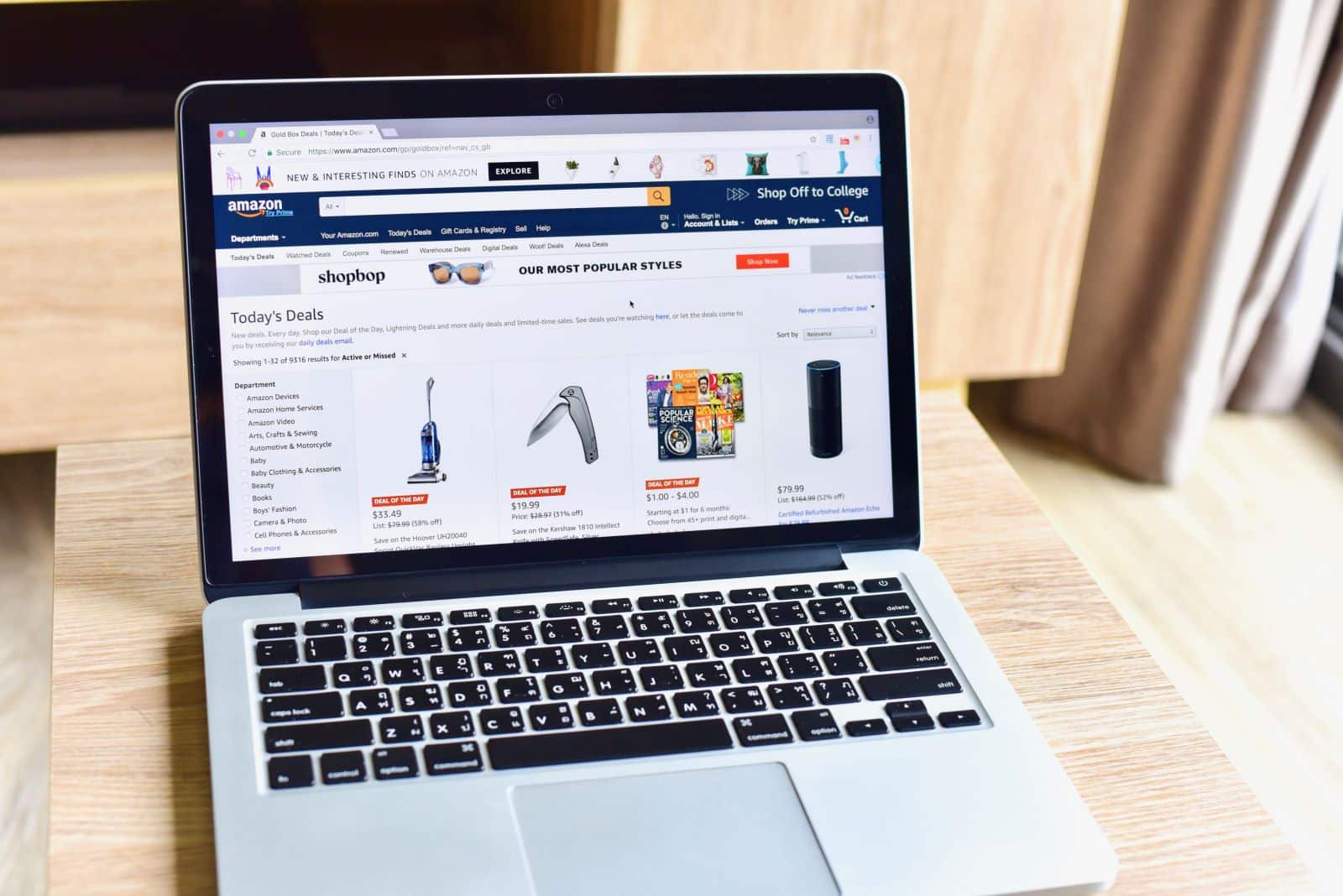Social media platforms are not just about connecting with others; they are sophisticated ecosystems designed to boost consumer spending. Here’s a deeper look at how these platforms subtly push you to open your wallet.
#1. Targeted Advertising

Social media uses complex algorithms to display ads that match your interests and past purchases, subtly persuading you to buy things you might not need. This targeted approach makes it challenging to resist because it feels like the ads are speaking directly to you.
#2. Influencer Endorsements

Influencers on social media often have lucrative deals to promote products, creating a persuasive environment where followers feel compelled to buy to emulate their lifestyle. This sense of trust and aspiration makes their endorsements particularly effective in driving sales.
#3. Fear of Missing Out (FOMO)

Observing friends and celebrities enjoying certain products or experiences on social media can invoke a strong fear of missing out, leading you to make impulse purchases just to keep up. This psychological trigger is powerful and often results in buying things you hadn’t planned on.
#4. Easy Access to Online Shopping

Social media platforms have integrated shopping features that make purchasing as simple as a few clicks away from your feed. This seamless transition from browsing to buying reduces the time you have to reconsider a purchase, increasing impulse buys.
#5. Exclusive Offers and Discounts

Brands often use their social media pages to announce exclusive deals or discounts that are not available elsewhere, enticing followers to act quickly and make a purchase. These special offers create a sense of urgency and exclusivity that can be hard to ignore.
#6. Flash Sales and Limited-Time Offers

Flash sales and limited-time offers are common on social media, using urgency to compel users to buy immediately to avoid missing out on great deals. This tactic plays on quick decision-making, often leading to unplanned spending.
#7. Group Buying and Social Shopping

Platforms facilitate group purchases or shared deals, making it more appealing to join others in spending, which often results in buying more than intended. The social aspect of these purchases can amplify the pressure to participate and spend.
#8. Lifestyle Aspiration

Social media showcases high-end lifestyles and luxury products, subtly influencing users to spend more in an attempt to mirror the lives they admire online. This aspirational marketing can lead to significant spending as users strive to match what they see.
#9. Unboxing and Haul Videos

Unboxing and haul videos create excitement and desire for new products, often leading viewers to purchase items to replicate the experience and joy shown by the presenter. These videos make products seem more appealing and necessary.
#10. Seamless Integration with E-commerce

The blend of social media with e-commerce creates a path that quickly moves users from desire to purchase, often bypassing thoughtful consideration. This integration makes it too easy to buy on impulse as you scroll through your feed.
#11. Constant Exposure to New Trends

Social media keeps users constantly updated on the latest trends, creating a cycle of buying to stay current with fashion, technology, and lifestyle products. This exposure can lead users to feel outdated quickly, prompting continuous purchases.
#12. Gamification of Shopping

Some social platforms use games or challenges that reward users with discounts or products, turning spending into a fun and engaging activity. This gamification can lead to more spending as users get caught up in the excitement of winning or earning rewards.
#13. Customized Recommendations

Based on your online activity, social media platforms suggest products you might like, often leading to purchases of items you hadn’t considered. These recommendations are tailored to increase the likelihood of you finding them irresistible.
#14. Positive Feedback from Purchases

When users post about their purchases and receive likes and comments, it reinforces the behavior of spending to gain social approval. This cycle of positive reinforcement can encourage more frequent and extravagant purchases.
#15. Comparison and Competition

Seeing others’ new acquisitions on social media can trigger a sense of competition or the need to keep up, leading to spending on similar or more expensive items. This comparison can be a significant driver of increased consumer spending.
#16. Emotional Spending Triggers

Advertisements and content on social media are often designed to evoke strong emotions, leading to comfort buying or emotional spending during vulnerable moments. This strategy taps into your feelings to encourage spending when you are most susceptible.
#17. Subscription Services Promotions

Social media frequently promotes various subscription services, enticing users to sign up for ongoing expenses that can accumulate over time. These services often start with free trials or low introductory rates that increase later.
#18. Virtual Events and Experiences

Participation in online events or digital experiences often comes with costs that are subtly encouraged through interactive and immersive social media campaigns. These events can lead to spending on tickets, merchandise, or premium features.
#19. Celebrity Collaborations

Celebrity partnerships with brands leverage their influence to make products seem more desirable and necessary, increasing the likelihood of spending among their fans. These collaborations can create a strong appeal, especially among younger audiences.
#20. Data-Driven Upselling

Using your data, social media platforms can effectively upsell by suggesting complementary products or upgrades that seem essential after your initial purchase. This strategy maximizes profit by encouraging additional spending based on your behavior and preferences.
Navigating the Influence

Understanding these tactics can help you navigate social media more mindfully and resist the urge to spend unnecessarily. It’s about being aware and making choices that align with your financial goals, not just the latest online trend.
Budget Boss: 12 Tips for Managing Your Money Wisely

Embarking on a journey to master budgeting requires evidence-based strategies supported by research to manage your finances effectively and achieve your financial goals. Here are 12 research-backed tips, along with actionable steps to implement them, for mastering budgeting and maximizing your financial well-being. Budget Boss: 12 Tips for Managing Your Money Wisely
Ranking the Top and Bottom 24 U.S. Universities

Wondering which universities are the cream of the crop and which ones fall short of the mark? Today, we’re ranking the 24 best and worst universities in the United States to give you the inside scoop on higher education excellence and disappointment. Are you ready to uncover the highs and lows of academia? Ranking the Top and Bottom 24 U.S. Universities
The Path to Self-Discovery: 15 Steps to Finding Your True Self

Embarking on a journey of self-discovery goes beyond mere introspection; it requires actionable steps backed by research to uncover your authentic self. Here are 15 evidence-based strategies and practical steps to get started on each. The Path to Self-Discovery: 15 Steps to Finding Your True Self
18 Trending Jobs That Let You Travel While Working

Dreaming of turning your wanderlust into a way of life? Believe it or not, there are careers that not only allow but encourage you to explore the globe, dive into new cultures, and collect experiences instead of things. Here are 18 unconventional jobs that offer just that, with a bit more insight into each. 18 Trending Jobs That Let You Travel While Working
Grow Every Day: 14 Habits for Tangible Personal Progress

Ready to take your personal growth journey to the next level? Incorporating small, tangible practices into your daily routine can lead to significant positive changes in your life. From expressing gratitude to nurturing connections with loved ones, these 14 daily habits are designed to empower you to thrive and flourish. Let’s dive in and elevate your life one day at a time! Grow Every Day: 14 Habits for Tangible Personal Progress
The post 20 Ways Social Media Influences You to Spend More Than You Should first appeared on Not Your Boss Babe.
Featured Image Credit: Shutterstock / Amnaj Khetsamtip.
The content of this article is for informational purposes only and does not constitute or replace professional financial advice.
For transparency, this content was partly developed with AI assistance and carefully curated by an experienced editor to be informative and ensure accuracy.





Leave a Reply